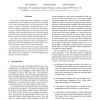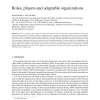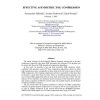1507 search results - page 201 / 302 » Separating Complexity Classes Using Structural Properties |
MDM
2004
Springer
14 years 3 months ago
2004
Springer
The greater sophistication and availability of mobile computing devices is enabling the application of computing to new tasks and applications to be experienced in a wide range of...
CSFW
2004
IEEE
14 years 2 months ago
2004
IEEE
Non-interference is a high-level security property that guarantees the absence of illicit information leakages through executing programs. More precisely, non-interference for a p...
AO
2007
13 years 10 months ago
2007
Role is a commonly used concept in software development, but a concept with divergent definitions. This paper discusses the characteristics of roles in software organizations, and...
SPE
2008
13 years 10 months ago
2008
The innate verbosity of the Extensible Markup Language remains one of its main weaknesses, especially when large XML documents are concerned. This problem can be solved with the a...
ICCD
2005
IEEE
14 years 7 months ago
2005
IEEE
Traditional approaches for sequential logic optimization include (1) explicit state-based techniques such as state minimization, (2) structural techniques such as retiming, and (3...



